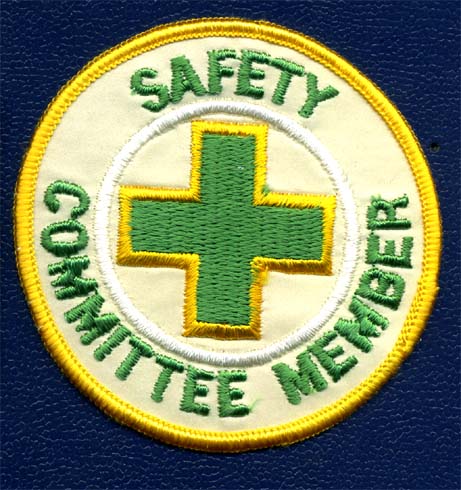The HR executive has a vital role in controlling risk. A major component of Risk Management planning is risk avoidance. Many risks can be avoided by controlling and planning the human side of the corporate equation. Succession planning, adequate severance and outplacement, executive coaching and development will ensure that an organization has the means to deal with current and future challenges .
Tag: human resources
Reasons CFOs Are Working Closely With Human Resources
 Health-care benefits, strategy, the recession, and the boardroom are all reasons why finance chiefs are working more closely with their human-resources managers.
Health-care benefits, strategy, the recession, and the boardroom are all reasons why finance chiefs are working more closely with their human-resources managers.
via cfos expand job responsibilities to human resources operations.
Preventing Sexual Harassment in the Workplace
 Preventing sexual harassment in the workplace, though difficult, is critically important. Fortunately, federal and state courts that have wrestled with the complex issues present in sexual harassment litigation have identified three steps an organization should take to prevent sexual harassment as well as liability for incidents that may nevertheless occur.
Preventing sexual harassment in the workplace, though difficult, is critically important. Fortunately, federal and state courts that have wrestled with the complex issues present in sexual harassment litigation have identified three steps an organization should take to prevent sexual harassment as well as liability for incidents that may nevertheless occur.
Step 1—Develop a Written Sexual Harassment Policy and Procedures.
Step 2—Distribute the Sexual Harassment Policy.
Step 3—Educate the Workforce and Train Supervisors.
An organization that diligently takes these three steps will significantly reduce sexual harassment complaints and protect the organization from costly litigation.
via Risk Managers’ Forum—Preventing sexual harassment in the workplace 08/08.
Managing Human Capital Risk
 The potential for risk in human resources can negatively affect entire business organizations — yet only half of organizations say they have a formal plan to assess such risks. It’s up to HR leaders to better understand the risks and the potential costs they represent to the business.
The potential for risk in human resources can negatively affect entire business organizations — yet only half of organizations say they have a formal plan to assess such risks. It’s up to HR leaders to better understand the risks and the potential costs they represent to the business.
via Human Resource Executive Online – Managing Human Capital Risk.
Safety Committee Meeting Tips
 Health and Safety Committee meetings should be held regularly on a specific day and time and at least on a quarterly basis (i.e. the first Thursday of each month/quarter at 8:30 A.M.). New committees should consider meeting on a more frequent basis. When a meeting schedule is planned well in advance, the members are then in a better position to arrange for their attendance and prepare for discussion.
Health and Safety Committee meetings should be held regularly on a specific day and time and at least on a quarterly basis (i.e. the first Thursday of each month/quarter at 8:30 A.M.). New committees should consider meeting on a more frequent basis. When a meeting schedule is planned well in advance, the members are then in a better position to arrange for their attendance and prepare for discussion.
A typical Committee meeting should include:
- Review of unfinished items from the previous meeting(s) and/or activities.
- Status reports from any sub-committees.
- Discussion/review of safety inspection reports and the actions taken to correct observed hazards.
- Review of accident/incidents sustained since the previous meeting and a discussion of measures to prevent similar accidents and incidents.
- Review of the status of current action plans or training programs.
- Review of outstanding recommendations developed by outside loss control consultants and/or Department of Commerce health and safety compliance inspectors.
- Discussion about activities related to future action plans and/or training programs.
- Discussion about special activities such as health fairs.
- Discussion about new business, future agenda items, projects and meeting dates.
The 10 Objectives of a Safety Committee
 In order to accomplish these objectives, the successful Health and Safety Committee should:
In order to accomplish these objectives, the successful Health and Safety Committee should:
- Develop a written mission statement and charter.
- Clearly define the duties and responsibilities of officers and general members.
- Identify and prioritize goals and establish action plans to achieve each goal.
- Include representation from different levels and areas of the organization.
- Meet at least quarterly/monthly.
- Record and disseminate minutes of each meeting, documenting attendance, problems and issues and corrective action proposed and actions taken to address each issue.
- Make attendance mandatory with the penalty of removal for repeated absences.
- Develop methods to increase and maintain safety awareness.
- Organize special sub-committees to address specific issues and projects.
- Communicate the purpose, activities and accomplishments of the committee to all employees.
The 7 Reasons For A Safety Committee
 Health and Safety Committees should be established for the following purposes:
Health and Safety Committees should be established for the following purposes:
- To increase and maintain the interest of employees in health and safety issues.
- To convince managers, supervisors and employees through awareness and training activities that they are primarily responsible for the prevention of workplace accidents.
- To help make health and safety activities an integral part of the organizations operating procedures, culture and programs.
- To provide an opportunity for the free discussion of health and safety problems and possible solutions.
- To inform and educate employees and supervisors about health and safety issues, new standards, research findings, etc.
- To help reduce the risk of workplace injuries and illnesses.
- To help insure compliance with federal and state health and safety standards.
OSHA – Top 10 Most Frequently Cited Standards
 The following is a list of the top 10 most frequently cited standards following inspections of worksites by federal OSHA. OSHA publishes this list to alert employers about these commonly cited standards so they can take steps to find and fix recognized hazards addressed in these and other standards before OSHA shows up. Far too many preventable injuries and illnesses occur in the workplace.
The following is a list of the top 10 most frequently cited standards following inspections of worksites by federal OSHA. OSHA publishes this list to alert employers about these commonly cited standards so they can take steps to find and fix recognized hazards addressed in these and other standards before OSHA shows up. Far too many preventable injuries and illnesses occur in the workplace.
- 1926.451 – Scaffolding
- 1926.501 – Fall Protection
- 1910.1200 – Hazard Communication
- 1910.134 – Respiratory Protection
- 1910.147 – Lockout/Tagout
- 1910.305 – Electrical, Wiring Methods
- 1910.178 – Powered Industrial Trucks
- 1926.1053 – Ladders
- 1910.303 – Electrical, General Requirements
- 1910.212 – Machine Guarding
The Impact of Off-the-Job Injuries
 “Off-the-job” injuries are injuries that involve employed people when they are not working. For example, a restaurant cook cuts his hand on a knife while fixing dinner at home or a truck driver who slides off an icy road while driving his car to work, hits a tree, and suffers a sprained wrist. These injuries occurred off-the-job. If similar injuries had occurred while in the restaurant or driving a truck, they would have been on-the-job injuries. If the cook and the truck driver had been retired, then the injuries would have been neither on-the-job nor off-the-job because the people were not employed. They would have been classified and nonwork injuries. Off-the-job injuries are of concern to employers because statistics show that for each on-the-job death due to unintentional injuries there are about twelve off-the-job deaths of workers due to unintentional injuries. And for each on-the-job injury involving lost time there are about three off-the-job injuries. There are about six times as many days lost from work due to off-the-job injuries as for on-the-job. Employers have to deal with the same disruptions to production and work schedules whether the injury occurred at work or away from work.
“Off-the-job” injuries are injuries that involve employed people when they are not working. For example, a restaurant cook cuts his hand on a knife while fixing dinner at home or a truck driver who slides off an icy road while driving his car to work, hits a tree, and suffers a sprained wrist. These injuries occurred off-the-job. If similar injuries had occurred while in the restaurant or driving a truck, they would have been on-the-job injuries. If the cook and the truck driver had been retired, then the injuries would have been neither on-the-job nor off-the-job because the people were not employed. They would have been classified and nonwork injuries. Off-the-job injuries are of concern to employers because statistics show that for each on-the-job death due to unintentional injuries there are about twelve off-the-job deaths of workers due to unintentional injuries. And for each on-the-job injury involving lost time there are about three off-the-job injuries. There are about six times as many days lost from work due to off-the-job injuries as for on-the-job. Employers have to deal with the same disruptions to production and work schedules whether the injury occurred at work or away from work.
Source: National Safety Council
Older Workers To Outnumber Younger Employees For The First Time
 Whether out of economic need or simply a desire to continue working, many baby boomers aren’t leaving their jobs anytime soon.
Whether out of economic need or simply a desire to continue working, many baby boomers aren’t leaving their jobs anytime soon.
In fact, many workers 55 and older are staying in the workforce. By year’s end their numbers will surpass those who are aged 25 to 34. And the trend is expected to continue for the foreseeable future — until 2020.
via Older Workers To Outnumber Younger Employees For The First Time.

